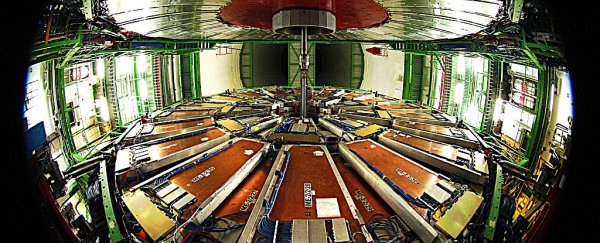Strap yourselves in, because CERN has something up its sleeve.
On Thursday 1 November, Large Hadron Collider (LHC) physicists will be discussing the fact that they may have found a new and unexpected new particle.
"I'd say theorists are excited and experimentalists are very sceptical," CERN physicist Alexandre Nikitenko told The Guardian. "As a physicist I must be very critical, but as the author of this analysis I must have some optimism too."
The telltale signal is a bump in the data collected by the LHC's Compact Muon Solenoid (CMS) detector as the researchers were smashing together particles to look for something else entirely.
When heavy particles - such as the Higgs Boson - are produced through particle collisions, they decay almost immediately. This produces a shower of smaller mass particles, as well as increased momentum, which can be picked up by the LHC's detectors.
When these particle showers produced pairs of muons (a type of elementary particle that is similar to an electron but with a much higher mass), the team sat up and paid attention. But what they traced these pairs back to was, to be very scientific about it, mega weird.
The new and unknown particle that seems to have produced the muons has a mass of around 28 GeV (giga-electronvolts), just over a fifth of the mass of the Higgs boson (125 GeV).
There's nothing in any of the current models that predicts this mass.
It's unlikely to be physics-breaking, sorry to disappoint. But it is strange - a mass that has formed where no mass was expected.
A word of caution, though: it's too early to get excited.
The signal could just be a glitch in the data, generated from random noise, which ended up being the case with what had been a tremendously exciting 750 GeV signal in 2016 - until it was found to be just a statistical fluctuation.
Until this data has been checked against newer CMS data, as well as data from the ATLAS detector, the discovery remains unconfirmed.
Still, an anomalous detection is always interesting - so we'll be tuning in tomorrow to see what the research team has to say when they give their talk.
You can also check out their paper - which has yet to be peer-reviewed - on pre-print resource arXiv.
